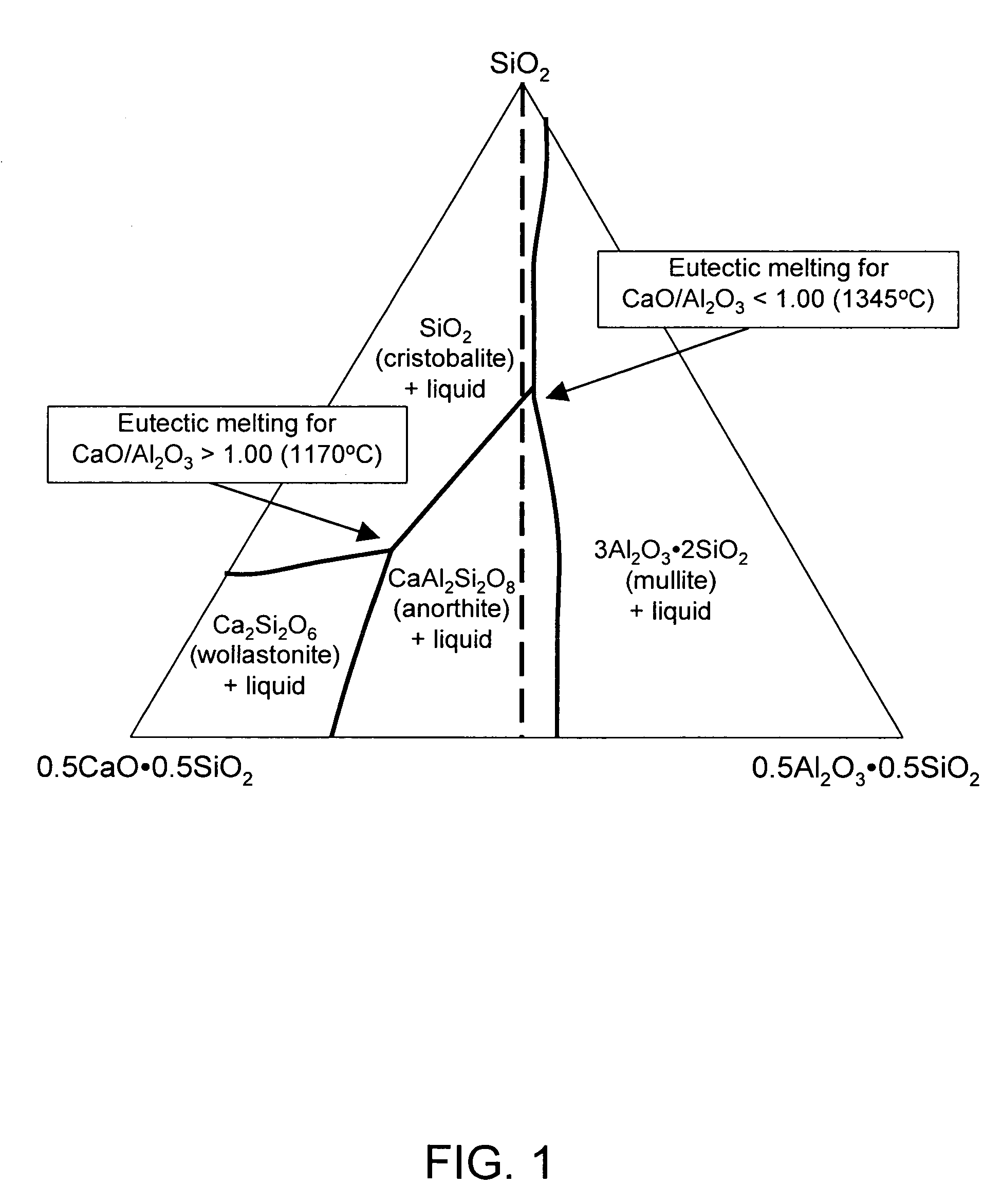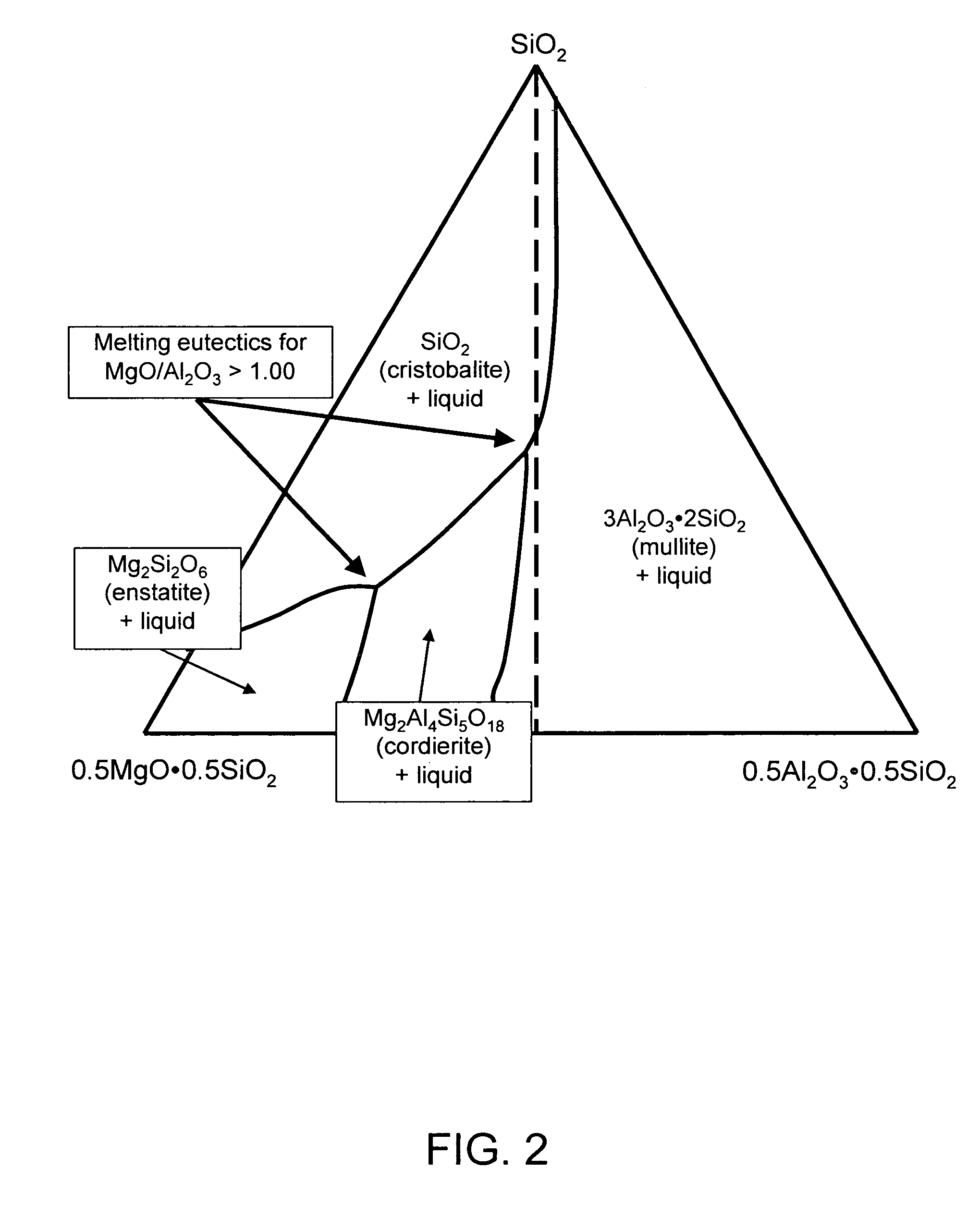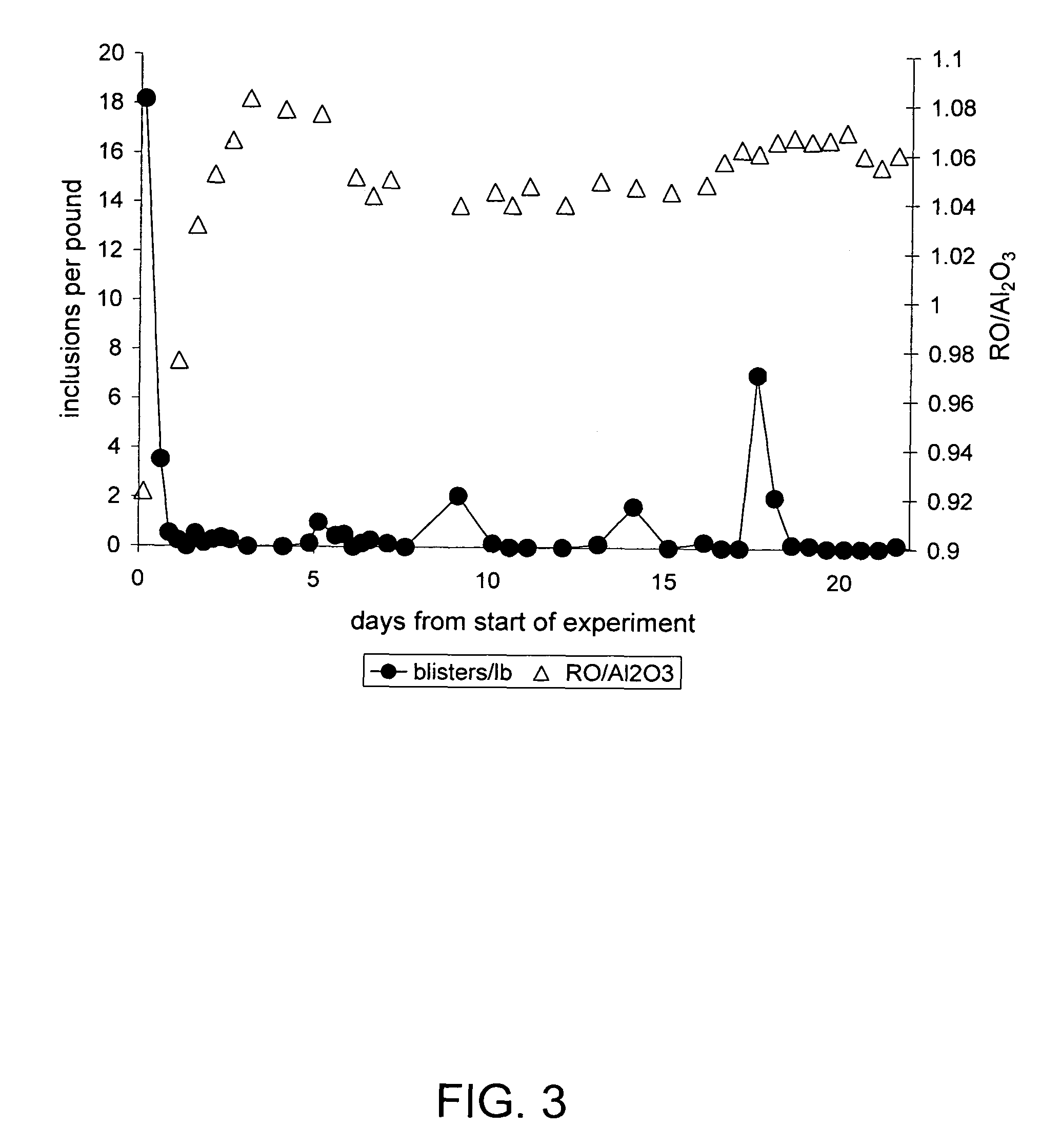Fining of boroalumino silicate glasses
a technology of boroalumino silicate glasses and boroalumino silicate, which is applied in the field of alkali-free, boroalumino silicate glasses, can solve the problems of affecting the ability of the light to rotate, the manufacturing of these displays is extremely complex, and the fusion process places rather severe restrictions on the glass properties
- Summary
- Abstract
- Description
- Claims
- Application Information
AI Technical Summary
Benefits of technology
Problems solved by technology
Method used
Image
Examples
Embodiment Construction
[0050]As discussed above, the present invention is concerned with improved glasses for use as substrates in flat panel displays, e.g., AMLCDs. In particular, the glasses meet the various property requirements of such substrates. The major components of the glass are SiO2, Al2O3, B2O3, and at least two alkaline earth oxides, i.e., at least MgO and CaO.
[0051]SiO2 serves as the basic glass former of the glasses of the invention. Its concentration should be greater than 64 mole percent in order to provide the glass with a density and chemical durability suitable for a flat panel display glass, e.g., an AMLCD glass, and a liquidus temperature (liquidus viscosity) which allows the glass to be formed by a downdraw process (e.g., a fusion process).
[0052]In particular, to be suitable for use in flat panel display applications, in particular, AMLCDs, the glasses of the invention preferably have a density less than or equal to 2.45 grams / cm3 (more preferably, less than or equal to 2.43 grams / c...
PUM
| Property | Measurement | Unit |
|---|---|---|
| density | aaaaa | aaaaa |
| liquidus viscosity | aaaaa | aaaaa |
| temperature | aaaaa | aaaaa |
Abstract
Description
Claims
Application Information
 Login to View More
Login to View More - R&D
- Intellectual Property
- Life Sciences
- Materials
- Tech Scout
- Unparalleled Data Quality
- Higher Quality Content
- 60% Fewer Hallucinations
Browse by: Latest US Patents, China's latest patents, Technical Efficacy Thesaurus, Application Domain, Technology Topic, Popular Technical Reports.
© 2025 PatSnap. All rights reserved.Legal|Privacy policy|Modern Slavery Act Transparency Statement|Sitemap|About US| Contact US: help@patsnap.com



